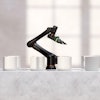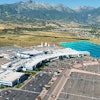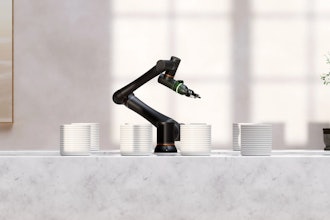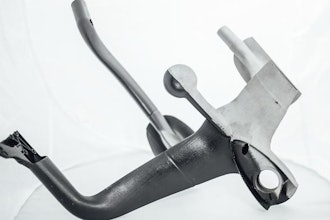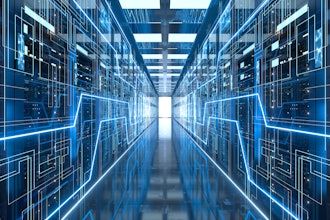
With the inauguration of President Joe Biden and the accompanying change of administration, 2021 brings much-needed optimism. The whole world has faced unprecedented challenges due to the COVID-19 pandemic, with all segments of the population impacted, all across the globe. Rebuilding the economy is one of the new administration’s top priorities. One key indicator for economic progress is gross domestic product (GDP), and the manufacturing industry is a good proxy for economic growth as it touches the four main elements of GDP — investments, government spending, exports and imports.
Before we get into predictions and opportunities, let’s look at the fundamentals of how the current fourth industrial revolution compares with its predecessors. The original Industrial Revolution used water and steam power to mechanize production. The second used electric power to create mass production. The third used electronics and information technology (IT) to automate production. The fourth, also known as Industry 4.0, which is currently underway, is fundamentally different. It’s characterized by the fusion of physical, digital and biological worlds. It brings new opportunities for growth — but also new challenges. Cyber security risks due to ubiquitous computing environments, wide disparities in education and wealth where the richest one percent of the population are the big winners, and depletion of the world’s natural resources are too great to be ignored.
Government policies always evolve with a change in administration. However, the current U.S. government is facing a multitude of challenges due to both demand and supply side shocks resulting from COVID-19. Since 1981, the federal government has issued at least one manufacturing-related regulation each week. Safe and healthy working environments are ensured through regulation. But the sheer volume of policies and inefficiencies in the process have increased the burden on manufacturing operations to focus on growth areas, competitiveness, and stability in international trade.
The manufacturing industry will either expect to see changes to existing policies or the introduction of new policies to provide a balance between flexibility and stability. President Biden demonstrated his commitment to making fast progress by signing an executive order aimed at bolstering manufacturing during his first week in office. Looking ahead, the following foundational areas could play a crucial role in new policies and investments in the manufacturing sector to drive economic growth.
Sustainable manufacturing
Industrial revolutions have driven economic gains and lifted millions to billions of people out of poverty. They have fueled population growth at the same time they increased the consumption of natural resources. The needs of more than 7.8 billion people worldwide transformed land usage and further impacted air quality, forests, bodies of water, and other natural resources. But the expanded footprint of global consumption is exceeding biocapacity, and it’s estimated that humans are using natural resources 1.75 times faster than ecosystems can regenerate.
Sustainability will be an area of focus to achieve resource efficiency. Innovation in sustainable manufacturing will help design and manufacture products that will minimize environmental impacts while conserving natural resources. In addition, sustainable manufacturing will significantly improve employee, society, and product safety.
 iStock
iStock
Agile and resilient factories
Resiliency will take center stage — particularly in this time of pandemic. Initially designed for software development, Agile methodology allows manufacturers to harness a faster-responding supply chain network to meet customer demands. The agile approach not only decreases costs and time to market, it also mitigates risk by allowing low-stakes decisions. Combined with lean manufacturing to reduce waste, this approach will aim to address efficiency with flexibility.
The manufacturing industry is already feeling the effects of new technologies and potential change in unexpected ways. According to McKinsey, manufacturing will experience more disruption in the next five years than in the past 20 years combined. For example, connected factories will produce data and insights at an unprecedented scale and provide opportunities to evolve from a reactive state to a predictive or prescriptive state. Predictive maintenance and supply chain optimization will become mainstream to make factories more resilient. By incorporating agile practices, factories can not only survive future shifts and shocks but also innovate for growth.
Upskilling the workforce
Per Deloitte’s research, gaps in manufacturing skills may leave over two million positions unfilled by 2028. More importantly, 47 percent of today’s jobs might be gone in the next 10 years, including 20 percent of assembler jobs in manufacturing. Shifting skills to other sectors will put over USD $400B of manufacturing GDP at risk. Despite the recent trend towards late retirement, more than 2.5 million baby boomers are expected to retire from manufacturing jobs over the next decade. These underlying trends clearly point towards the need to reskill the workforce.
Industry 4.0 will demand skills in automation, robotics, digital and augmented intelligence or AI. Humans will work alongside robots and machines. Automation will be embedded across functions to deliver higher productivity. The industry will see increased human-machine interaction with insights from the Internet of Things (IoT). Knowledge management and upskilling will drive competitive advantage.
The Final Word
There couldn’t be a better time for new policies in the industry. The COVID-19 pandemic has shaken international trade and supply chains. However, it also created a test bed upon which manufacturers and consumers embraced new experiences — online commerce, “cobots” or collaborative robots, automation, and the subscription economy. Some concepts have already been proven and many are in the works. The risks are manageable and the outlook is exciting. Now, it’s just a matter of putting the right policies in place to shift this revolution into full gear.
Venkat Eswara is the vice president of product marketing at Syncron.

